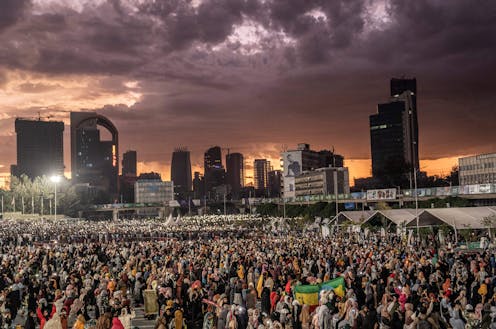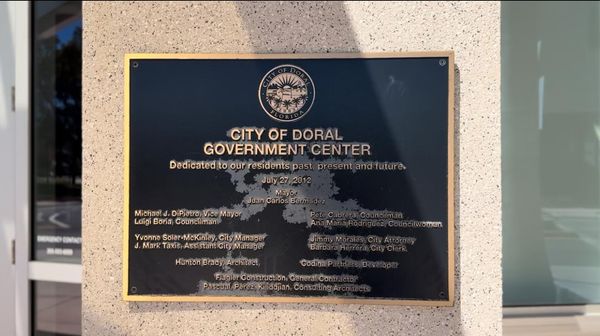
Addis Ababa, Ethiopia’s capital city, will likely face increased heatwaves, droughts and severe flooding over the next 67 years. These changes will pose risks to public health and infrastructure. They’ll also be felt most acutely by the city’s most vulnerable residents: those living in informal settlements.
Addis Ababa is one of the fastest-growing cities in Africa, and its current metropolitan population of about 5.4 million is projected to reach close to 9 million by 2035.
This increase in the city’s population will be absorbed by informal settlements, the prime destination for most migrants. And informal settlements are characterised by poor or non-existent infrastructure, and face the twin challenges of worsening climate change and poor urban environmental policy.
To investigate the city’s vulnerability to climate change, researchers at Tufts University and the Woodwell Climate Research Center analysed flood risk and temperature data for different time periods, projecting from the past to the future.
We predicted that the city’s extreme daily maximum temperatures would increase by about 1.7°C over the period 2040-2060, compared with 2000–2020. An increase of 1.7°C would result in a rise in the frequency, duration, and intensity of heatwaves. In addition, higher temperatures contribute to increased water vapour and transpiration. This will threaten health, ecosystems, infrastructure, livelihoods, and food supplies.
Certain southern neighbourhoods, such as Akaki-Kaliti, Bole and Nifas Silk-Lafto, have experienced notably higher temperatures, especially during the warm season from March to May. And, looking to the future, temperature projections for Nifas Silk-Lafto suggest an average temperature increase to 26.21°C between 2040 and 2060, and further increase to 27.78°C from 2070 to 2090 and 27.78°C from 2070 to 2090.
For the warm-season months of March, April, and May, a temperature increase of 1.8°C is projected. This suggests that the peak temperature for the hottest day of the year will rise by an average of 1.8°C compared to recent data. From 2000 to 2020 the average temperature in the Nifas Silk-Lafto sub-city was 24.70°C.
Increases in temperatures of this magnitude will lead to public health challenges such as increased malaria risks, disproportionately affecting vulnerable groups like the elderly, children, and women.
More droughts
Over the past two decades, Addis Ababa has endured an average of three months of extreme drought yearly. Using the Palmer Drought Severity Index to assess temperature and precipitation data in a geographical area, our analysis suggests that extreme drought events will become more frequent between 2040 and 2060. The city is expected to experience an additional 1.6 months of extreme drought annually, a 53% increase compared with 2000-2020.
This rising frequency of droughts, along with the city’s growing population, is intensifying water insecurity. Groundwater reserves for drought emergencies are already being depleted.
These droughts will affect health, hydroelectric energy production and urban agriculture.
Flooding
Too much rainfall, particularly if it occurs within a short period of time in an urban area, leads to flooding. Flooding poses a significant environmental risk to Addis Ababa, especially because the city has developed around three primary rivers.
Climate change will increase water-related challenges by affecting the flow of rivers and the replenishment of groundwater.
Currently, 67% of the population in Addis lives in flood prone areas. The parts of the city that are most at risk include central Addis, which has the greatest density of impervious surfaces like tarmac and concrete. These contribute to flood risk because water can’t seep into the ground.
Other parts of the city that are at risk include the southern half – where the slope is relatively flatter, so water doesn’t flow away – and the Nifas Silk-Lafto region, where considerable development has taken place in the floodplain.
Several factors will add to the flooding challenge. The city has inadequate sewerage infrastructure and weak drainage systems which are often obstructed by solid waste.
The impact
The effects on the city’s residents will be substantial.
Health is just one example.
Our data show that average temperatures in the city will make year-round malaria transmission a risk. There will have to be sustained policy measures to deal with the risk.
Older adults and pregnant women are particularly vulnerable to the health impacts of climate change. The elderly are more sensitive to heat and pollution due to existing health conditions, limited mobility, and compromised immune systems. Pregnant women face risks from thermal variations and mosquito-borne illnesses like malaria and Zika.
Read more: Climate change will cause more African children to die from hot weather
Many urban residents will be prone to increasing floods. Already 10% of the city’s newly developed areas are within a 100-year floodplain, threatening lives and infrastructures.
People living in informal settlements are particularly at risk – that’s about 70% of Addis Ababa’s residents. These settlements crop up in limited and unused spaces, such as riverbanks. They are at a higher risk of flood impact, and the risk is growing.
Our data shows that currently the percentage difference in vulnerability between formal and informal settlements is 0.6%. The figure illustrates the extent to which buildings within formal and informal settlements would be affected by flooding events. It is expected to rise to 1.3% by 2050 and 1.6% by 2080.
Policy recommendations
There’s an urgent need for policies that can rise to these challenges. We suggest:
the government should establish a climate adaptation and resilience office, to integrate climate resilience into urban planning
an independent body should then assess policies in practice
a water management strategy to ensure equitable access and sustainable use of water
the city should invest in green infrastructure
Read more: Global climate finance leaves out cities: fixing it is critical to battling climate change
upgrading infrastructure and improving waste management
public awareness campaigns and school education on climate change impacts
developing mechanisms for effective collaboration among government departments, non-governmental organisations and international agencies.
Abay Yimere does not work for, consult, own shares in or receive funding from any company or organisation that would benefit from this article, and has disclosed no relevant affiliations beyond their academic appointment.
This article was originally published on The Conversation. Read the original article.







